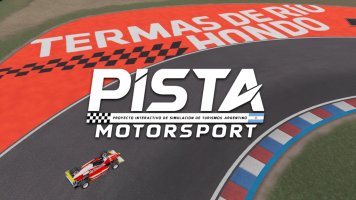Mr Latte
Premium
Simlab rigs are rather small, let me highlight something that most still may not have grasped.
It's actually quite hard to get good working stereo in pedals and with standard pedal installs yet so many people that get into tactile think oh they need 4 units to make it cool and in corner type positions for representing the wheels/suspension. They see this as the ideal approach to either buy or work towards.
Most of this below will likely be ignored, so feel free to skip this or perhaps stop for a moment, listen to what I offer to consider.

It's actually quite hard to get good working stereo in pedals and with standard pedal installs yet so many people that get into tactile think oh they need 4 units to make it cool and in corner type positions for representing the wheels/suspension. They see this as the ideal approach to either buy or work towards.
Most of this below will likely be ignored, so feel free to skip this or perhaps stop for a moment, listen to what I offer to consider.
If you have a section of wood/metal with two units installed on it and they are only a few inches apart, someone just explain to me how they think those two units are going to work and be felt independently? Clearly the energy from a left unit will also still be felt on the right-hand side of the pedal platform. I have been here, I did the same things and mistakes when I was new to tactile.
Factors mentioned/shown recently.
Trace / Extend / Control:
A key factor is tracing the point of impact a unit has, where its energy can/will travel and how it may travel to other places. If we take this into account and try to control this, if we lengthen the distance via pathway methods the energy has or can only travel then we can improve the stereo crosstalk. As the further we increase this then the less energy it will have on the opposite side and we also alter the timing.
Narrow cockpits and with very little distance for the energy to travel from L/R units to L/R pedals will have issues with stereo crosstalk. Some improvements are possible but......
Ask yourself this....
Taking into account a specialist modification and extra materials as well as costs, it may require to help better control the pathway of the tactile to improve the stereo output.
Would "The User" not actually be better in considering to avoid having stereo (in pedals) with the additional complications involved and instead of using two units like Aura Pro or BK Mini (typical choices).
I would recommend installing a single TST (209) or (239) but have it combined with a larger BK like the medium-sized BK Advance or indeed the LFE or Concert models. Do this in stages as someting to work towards if need be but if you have work towards this rather than the common approach and buying two budget or entry-level units with the limitations in performance those tend to have.
Why you says this Mr Latte, maybe your milk is off?
Ahhh, as this option you will not have to worry about stereo in pedals, seek to modify or complicate things and you get big smiley bonus with...
A) Much better lower bass response and far more energy
B) Much better mid-high frequency and more finer detailing
Note that when A/B factors above are combined together, they tend to make a dramatic impact on both the quality and enjoyment of whatever effects you want to use. Regardless if it is RPM/SPEED, bumps, wheel slip or high energy braking/deceleration.
Factors mentioned/shown recently.
- Isolating the pedal platform will help improve and maintain the energy, it will not likely help improve the stereo crosstalk.
- Having two units under your heels will let you feel the energy directly but it will no doubt make it also very easy for energy from each unit to be felt in both feet. This to me may help improve the efficiency of felt energy but still will have issues with corrupted stereo.
Trace / Extend / Control:
A key factor is tracing the point of impact a unit has, where its energy can/will travel and how it may travel to other places. If we take this into account and try to control this, if we lengthen the distance via pathway methods the energy has or can only travel then we can improve the stereo crosstalk. As the further we increase this then the less energy it will have on the opposite side and we also alter the timing.
Narrow cockpits and with very little distance for the energy to travel from L/R units to L/R pedals will have issues with stereo crosstalk. Some improvements are possible but......
Ask yourself this....
Taking into account a specialist modification and extra materials as well as costs, it may require to help better control the pathway of the tactile to improve the stereo output.
Would "The User" not actually be better in considering to avoid having stereo (in pedals) with the additional complications involved and instead of using two units like Aura Pro or BK Mini (typical choices).
I would recommend installing a single TST (209) or (239) but have it combined with a larger BK like the medium-sized BK Advance or indeed the LFE or Concert models. Do this in stages as someting to work towards if need be but if you have work towards this rather than the common approach and buying two budget or entry-level units with the limitations in performance those tend to have.
Why you says this Mr Latte, maybe your milk is off?
Ahhh, as this option you will not have to worry about stereo in pedals, seek to modify or complicate things and you get big smiley bonus with...
A) Much better lower bass response and far more energy
B) Much better mid-high frequency and more finer detailing
Note that when A/B factors above are combined together, they tend to make a dramatic impact on both the quality and enjoyment of whatever effects you want to use. Regardless if it is RPM/SPEED, bumps, wheel slip or high energy braking/deceleration.
Last edited:













